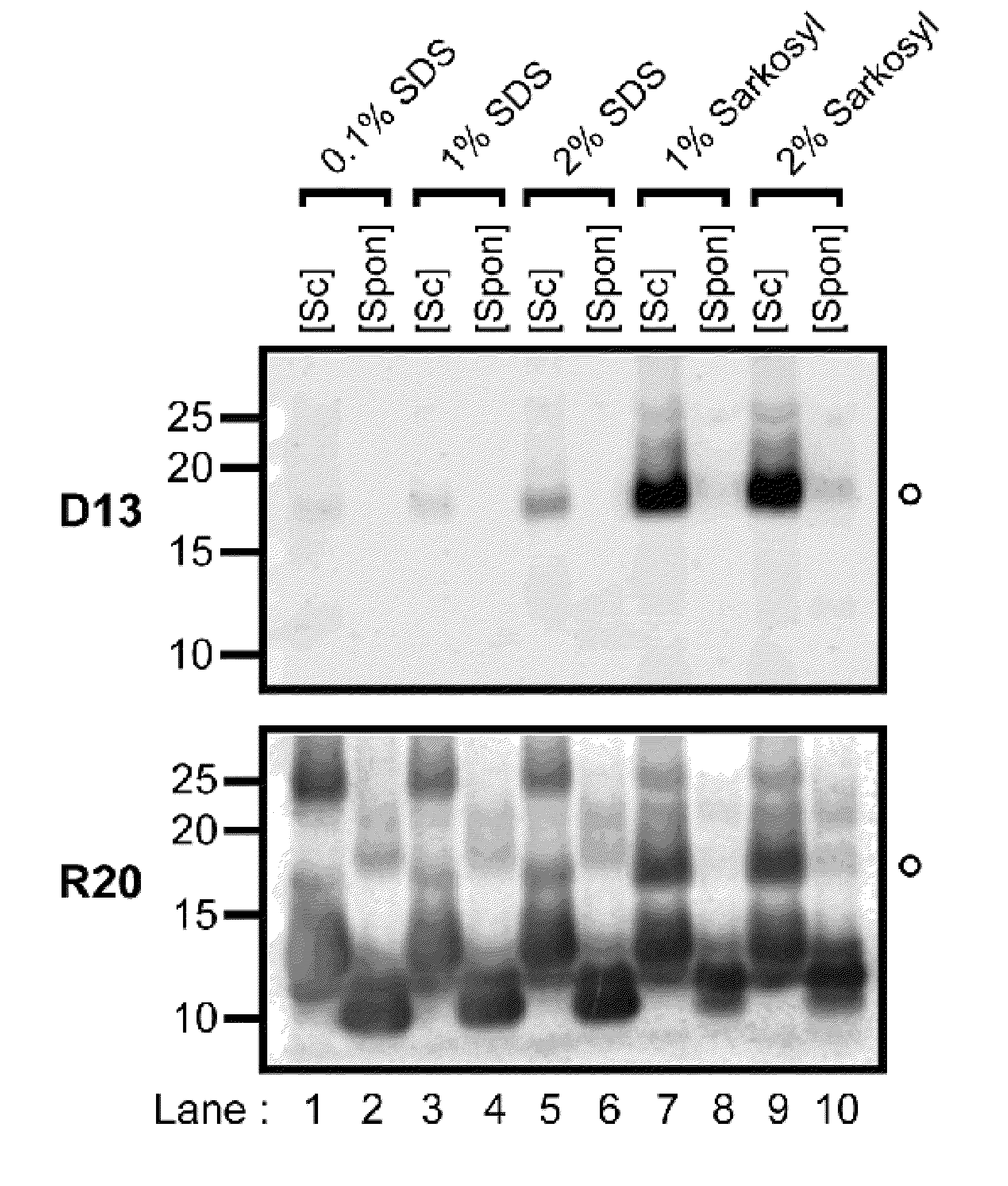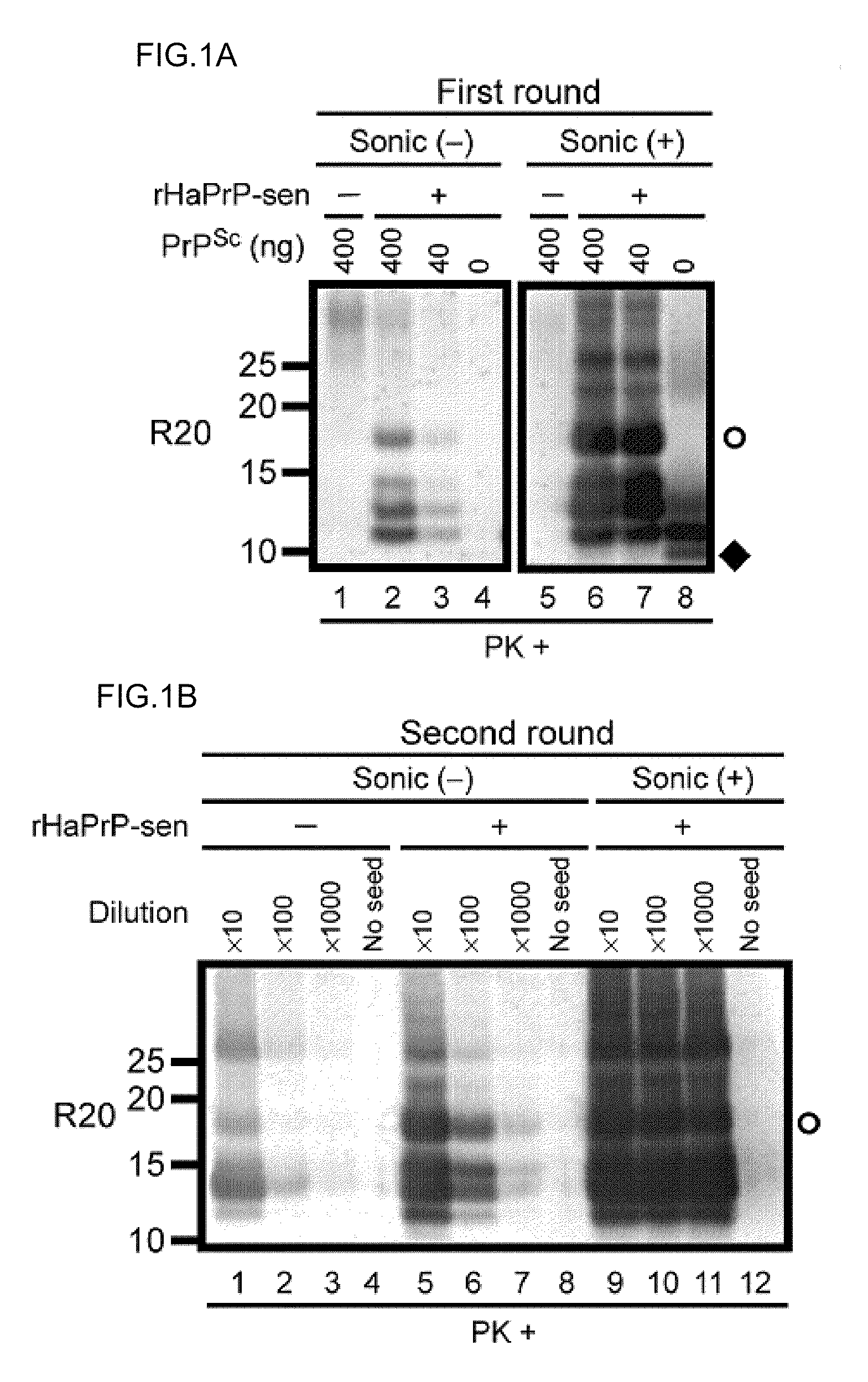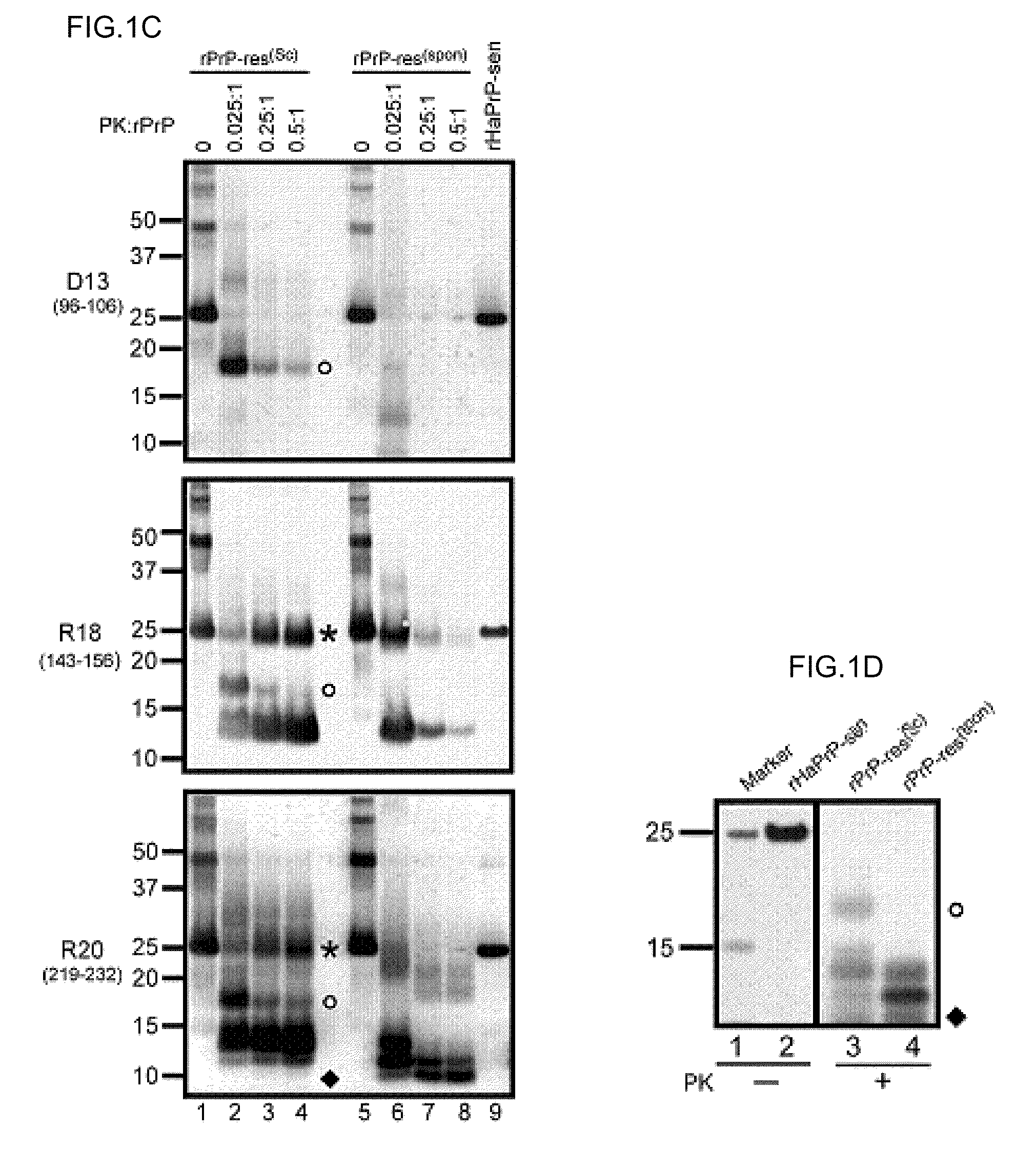Detection of infectious prion protein by seeded conversion of recombinant prion protein
a technology of prion protein and seeded conversion, which is applied in the field of detection of infectious proteins or prions, can solve the problems of complicated detection of rprp-ressup, and achieve the effects of limiting the transmission of prion diseases, and reducing the risk of infection
- Summary
- Abstract
- Description
- Claims
- Application Information
AI Technical Summary
Benefits of technology
Problems solved by technology
Method used
Image
Examples
example 1
Materials and Methods
[0220]This example describes materials and methods used to carry out Examples 2-8. Although particular methods are described, it is understood that other methods can be used.
Recombinant prion protein expression and purification
[0221]DNA sequences coding for hamster (GENBANK® Accession No. M14054) and mouse (GENBANK® Accession No. BC006703) prion protein residues 23-230 or 90-230 were amplified by standard PCR, ligated into the Kanamycin selective pET41 vector (EMD Biosciences) as NdeI / HindIII inserts, and their sequences were verified. After transforming the plasmids into E. coli Rosetta cells (EMD Biosciences), the rPrP-sen was expressed using the Overnight Express Autoinduction system according to the instructions from the manufacturer (EMD Biosciences). A typical mass of wet cell paste was 8-9 grams per Liter of Luria-Bertani media. Cell pellets were lysed with BugBuster™ and Lysonase™ (EMD Biosciences). Approximately 25 mL of BugBuster™ with 50 μL of lysonas...
example 2
Spontaneous Conversion of rPrP-sen
[0235]This Example describes the identification of an exemplary set of reaction conditions that allow clear discrimination between PrPSc-seeded and unseeded reaction products. Although particular reaction conditions are specified, one will recognize that other reaction conditions can be used.
[0236]Development of a PMCA-like reaction for PrPSc amplification using rPrP-sen as a substrate requires conditions that allow for clear discrimination between PrPSc-seeded and unseeded reaction products. Initial trials revealed that in 0.1% SDS with periodic sonications, bacterially expressed recombinant mouse PrP-sen (rMoPrP-sen; FIG. 5) and hamster PrP-sen (rHaPrP-sen) converted spontaneously to thioflavin T-positive, proteinase K (PK)-resistant forms designated rMoPrP-res(spon) and rHaPrP-res(spon), respectively. The fragments generated by PK-digestion of rMoPrP-res(spon) and rHaPrP-res(spon) were 10-12 kDa, that is, much smaller than the ˜17-19 kDa fragment...
example 3
Seeding of rPrP-sen conversion by PrPSc
[0237]This example demonstrates that scrapie PrPSc can seed the conversion of rPrP-sen to rPrP-res.
[0238]Scrapie PrPSc purified from hamster brains (HaPrPSc; Raymond & Chabry in Techniques in Prion Research (eds. Lehmann & Grassi) 16-26 (Birkhauser Verlag, Basel, 2004)) was used to seed the conversion of rHaPrP-sen. PK-resistant fragments seeded by PrPSc (rHaPrP-res(Sc), where (Sc) refers to seeding by PrPSc) were generated with seed-to-substrate ratios of 1:100 (400 ng HaPrPSc) and 1:1,000 (40 ng HaPrPSc) in both the unsonicated and sonicated reactions, but, when sonicated were much more abundant and less dependent on the amount of seed (FIG. 1A). When analyzed by immunoblotting using an anti-PrP antibody R20 directed toward C-terminal residues 219-232, rHaPrP-res(Sc) consisted of 4 PK-resistant fragments (11, 12, 13 and 17 kDa). In contrast, and as expected, the unseeded reactions gave either no PK-resistant bands (FIG. 1A) or, more rarely, ...
PUM
| Property | Measurement | Unit |
|---|---|---|
| volume | aaaaa | aaaaa |
| volume | aaaaa | aaaaa |
| volume | aaaaa | aaaaa |
Abstract
Description
Claims
Application Information
 Login to View More
Login to View More - R&D
- Intellectual Property
- Life Sciences
- Materials
- Tech Scout
- Unparalleled Data Quality
- Higher Quality Content
- 60% Fewer Hallucinations
Browse by: Latest US Patents, China's latest patents, Technical Efficacy Thesaurus, Application Domain, Technology Topic, Popular Technical Reports.
© 2025 PatSnap. All rights reserved.Legal|Privacy policy|Modern Slavery Act Transparency Statement|Sitemap|About US| Contact US: help@patsnap.com



